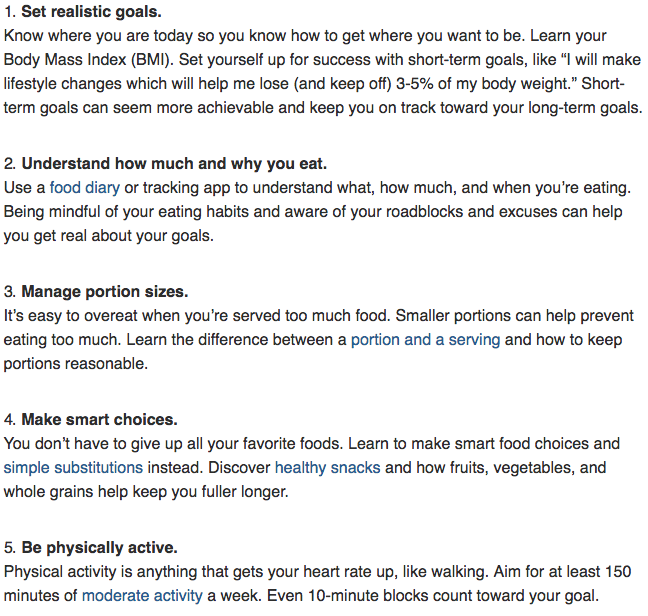User-focused content is exactly what you’d expect. All you’re doing is creating content with the user in mind, and solely the user in mind. This means no sales talk, no promoting for your benefit and no writing purely for search engines.
But, the whole point of content is to market my brand?” You say in an unconvinced tone.
“Ah, yes and no. The real point should be to make your audience’s life better. To solve their issue. It is only then, that you can successfully promote your brand – without forcing it.” I reply, as you still look confused.
Listen, how about we break it down and look at why and how you create content that converts, by focusing on the user instead of your brand?
The story behind bad content
By now, you must know that pushy sales talk simply doesn’t work anymore. Consumers want to read blogs and articles that solve their problems. It’s that simple. So why are there still so many brands out there, that create content based on the purpose of linking to their site or pushing their products onto the un-expecting reader?
The answer to this is again, simple. Because brands are so focused on converting users, on making a profit, on gaining new customers, they forget about the one reason for their brand. To serve the customer.
As much as brands often forget, their audience, customers, clients and social followers are the main thing that’s keeping their business alive. Without them, the brand becomes dust in the wind. Nothing.
No customers, no audience, no followers, no business.
It’s all good and well knowing this, but implementing it into your own content can be tricky.
“It seems so easy, surely there’s not much to it?”
“Oh, dear reader you are so far from right. All is not lost though, I will guide you through the forest of writing user-focused content that coverts. Stick with me and follow closely…”
Destroying the building blocks of bad content
 The very first thing you should do is destroy your original thoughts on how to write. Knock down the building blocks of strategies that you use to create on.
The very first thing you should do is destroy your original thoughts on how to write. Knock down the building blocks of strategies that you use to create on.
Why? Because it’s ugly. It’s boring. It’s intimidating. It needs to go.
This means scrapping your plans of writing content that’s been written a ton of times, solely to get your product or service mentioned in the dry, useless content.
Take out any ideas of re-writing an article that’s full of basic answers that hold nothing but the common bricks of basic knowledge.
Here’s an example of content with the most obvious tips, that aren’t helpful:
As you can see, this post lists the five very basic ways of losing weight. To make things even worse, these 5 tips can be found anywhere. They’re in tons of other articles claiming to help you lose weight and fast.
Not only is it useless information and re-written content, it’s also very obvious that the purpose of this content is to link to other sites. It is a prime example of writing content on unstable building blocks.
Planting seeds of solutions and possibilities
Dig deep into the roots of the issue and allow those roots to feed your reader the best possible solutions. Whatever you do, don’t feed them with useless fluff just to pad out your word count.
Truth is, no one is going to read a daunting 3,000-word article on the best vacuum cleaner to buy. Would you?

This brings us to our next point. How do you know if your content is solving the reader’s issue? Ask yourself if you would read the article if you had the same problem your audience does.
If your answer is no or hmm maybe, then scrap it. Refresh your brain and start again. So, instead of that 3,000-word article on the best vacuum, write about how amazing the science behind how vacuums are made, really is.
You’re still on topic, still able to mention your product but, consumers will actually be intrigued by this article. And the only way they can find out more is to read your content.
The problem you’re solving for them? Your article is teaching them something they didn’t even realise they wanted to know. Within this article, you can easily go on to explain how a few of the best vacuum cleaners work differently and why that’s so amazing.
You’re targeting the inner detective in everyone. You know the little voice that begs you to find out about that fascinating statement? That drive is how you can write content that draws readers in, that keeps them curious and engaged.
Now you’ve planted the seed, you’ve hooked your audience; it’s time to keep them reading.
Tell a story that waters the seed
The seed is there, all it needs is a little water for it to flourish. Write your content like you’re trying to keep that seed alive. By keeping the seed – the solution – alive you’re keeping your reader locked in.
This doesn’t mean you should trap your audience by tricking them into thinking your article is going to fix their initial problem. What it does mean is sprinkling adventure and anticipation along the path you’re going to create with your words.
You want them to follow every sentence as if they’re tracing breadcrumbs in the hope to piece together an answer. At the end, they’ll understand the solution you are giving them and hopefully, they’ll come back to your brand over and over again whenever they need something related.
Pull out any weeds

The weeds within content are the useless blab. The sentences and words that have only one purpose – to fill in the gaps. But if you’ve written a decent piece, there shouldn’t be any gaps for weeds to dig their way in.
Sentences that use phrases, such as: The reason for this is because…
The same phrase, without the weeds: This is because…
It’s also about using words that are over-complicated and unnecessary. Like using ‘prodigious’ instead of ‘big’. Don’t worry, most people thought ‘what the heck does prodigious mean?’ before reading the full sentence.
That’s exactly the point I’m trying to make. Words that mean one thing, but sound stupidly smart or over complicated just intimidate the reader. Would you carry on reading if this post used words like ‘prodigious’ or ‘inordinate’? Both of which mean a similar thing – big.
With this said, using simpler words doesn’t mean you should lack in the creativity of the words you choose. It’s just that you should be using words that most readers will understand.
Expanding the knowledge of your reader
You’ve got the users attention, you’ve kept them intrigued and reading, now it’s time to focus on their enjoyment. If they aren’t going to enjoy reading the content, what’s the point? If you’ve got the solution to their problem then, yes, they probably will read it.

But and this is an inordinate ‘but’ (I’m being ironic, in case you didn’t notice – and a little crude), all they’ll do is skip past most of your content to get to the point.
To avoid this, you need to take them on a journey of discovery. Still be clear and to the point, but do so in such a way that they actually have fun reading every word you within your post.
Finally, you’ve made a great piece of content that readers will trust, listen to and come back to. That is what makes content convert. The trust built and the experience, emotions and journey taken when they read your post, is what will convert. If they trust you and they trust your brand is useful, they’ll trust your product or service is just as useful.
Well, what’s the best piece of content you’ve written?
Was it user-focused or does it challenge the idea that user-focused content converts? Whatever your content shows, share it with us today.
